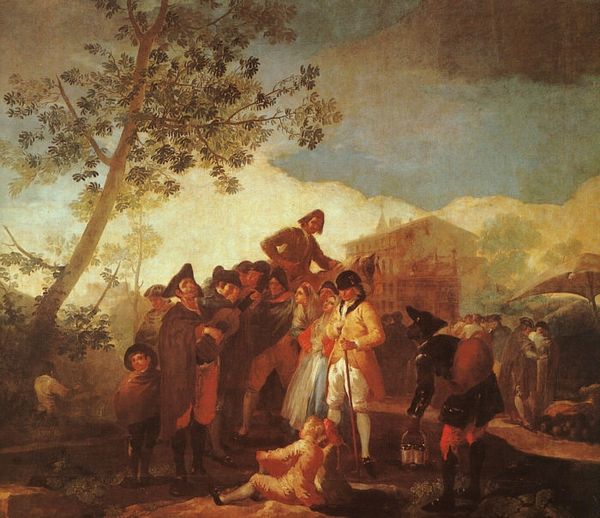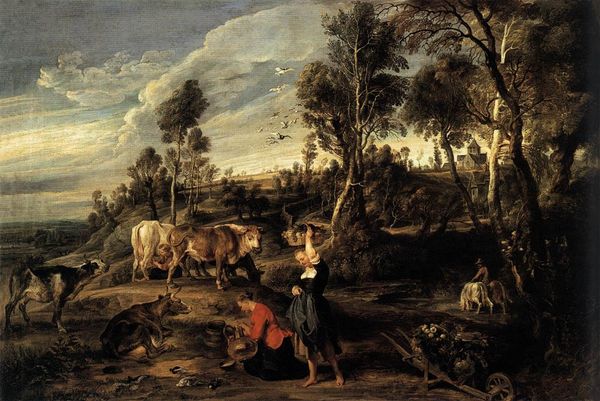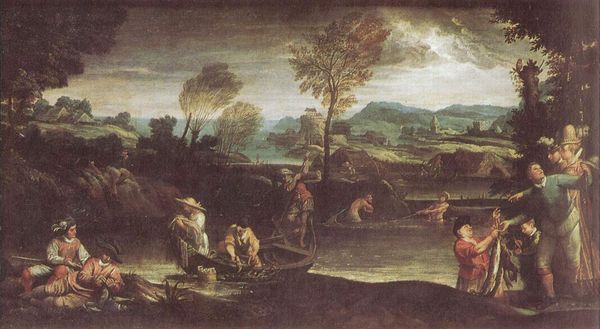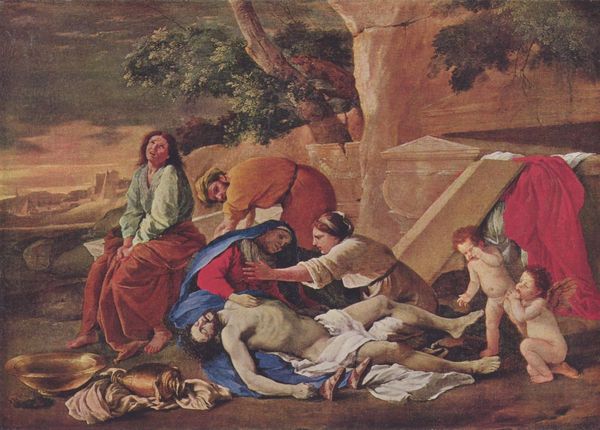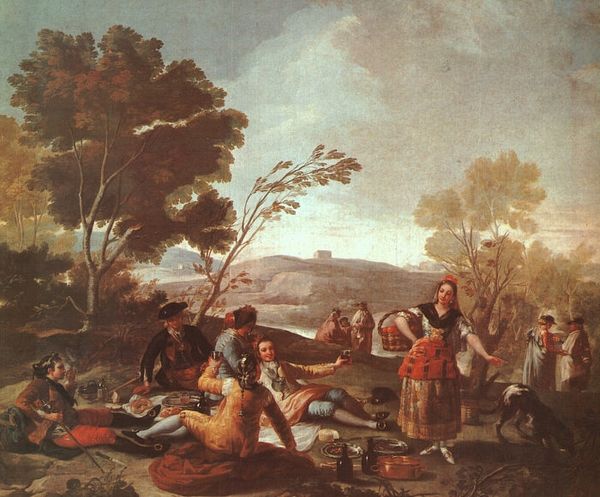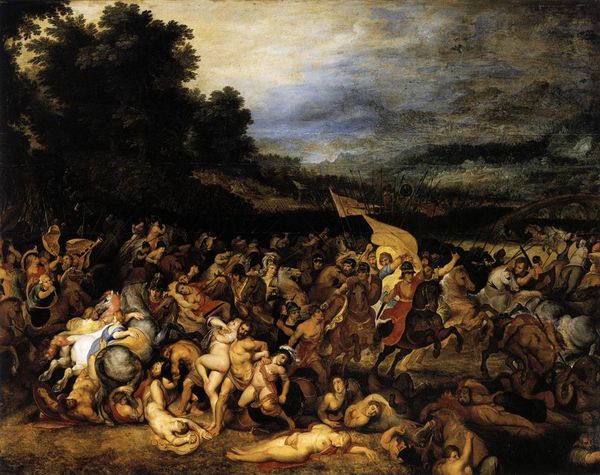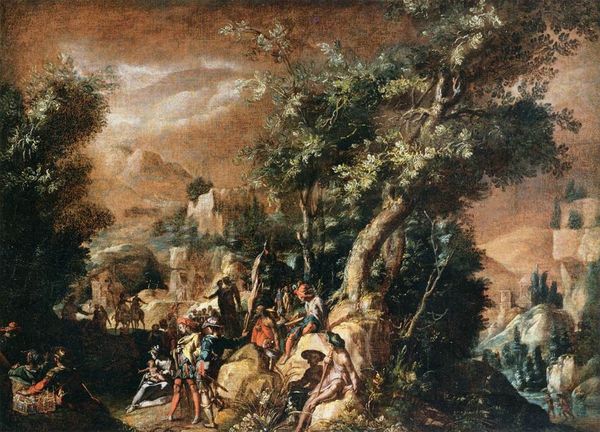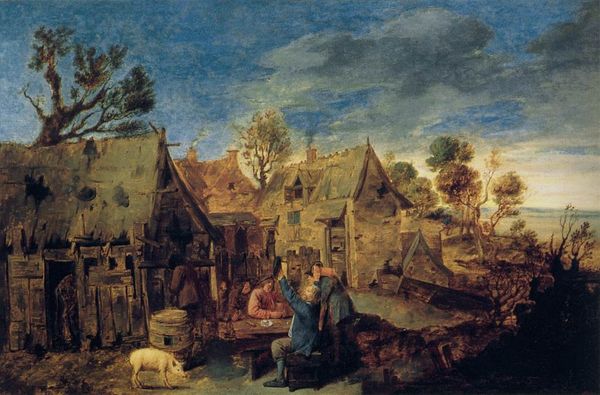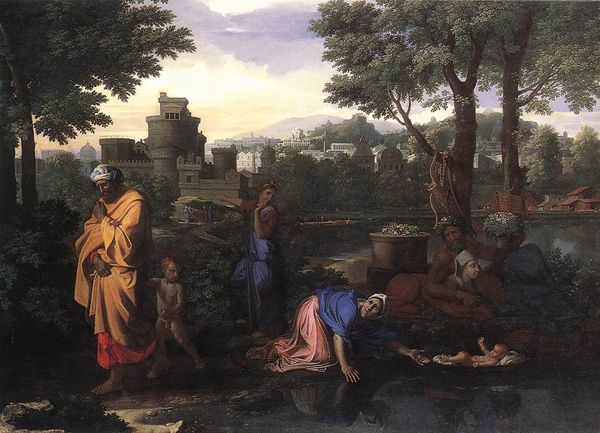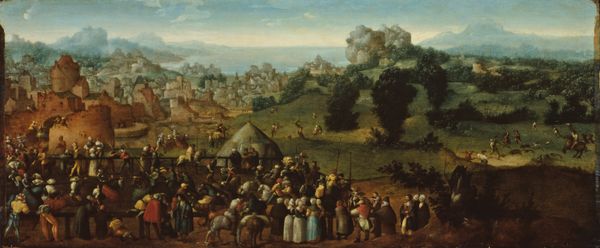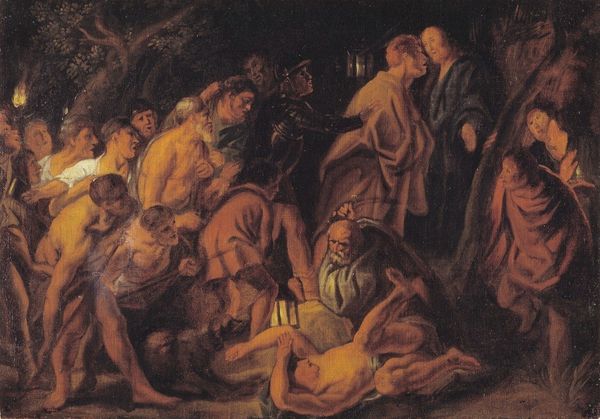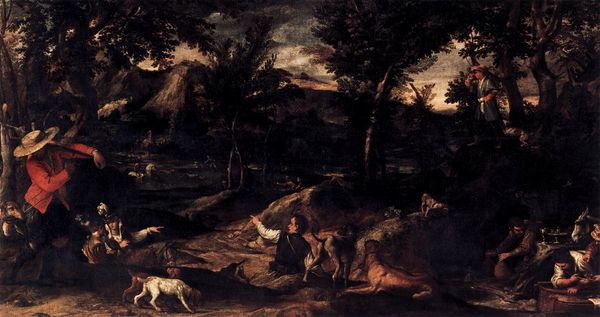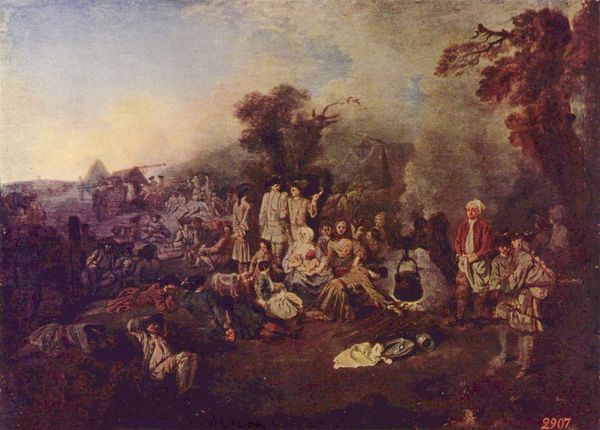
oil-paint
#
narrative-art
#
baroque
#
oil-paint
#
figuration
#
oil painting
#
cityscape
#
genre-painting
Copyright: Public domain
Curator: Oh, there's so much happening here, isn't it wonderful? "Village Fair," painted by Giuseppe Maria Crespi in 1709, now residing at the Palazzo Brera. What do you see first, I'm curious? Editor: Initially? A muted chaos. It’s got that sepia-toned Old Master feel, like a dream fading at the edges. Crowded, everyone entangled in their own little drama within a bigger one. What’s it saying, I wonder, beyond the bustle? Curator: Well, genre scenes were definitely Crespi's forte. Capturing slices of everyday life, the vibrant chaos, that human messiness… But what resonates for me is this inherent liveliness. The artist really got his fingers into what was important to people – fun. There are animals being herded, families bartering and babies carried. What sort of cultural echoes do you hear in this sort of imagery? Editor: Echoes of community. Look at how they’re grouped, each interaction laden with meaning. That cluster of women in the foreground—a sacred circle of feminine energy. The figures playing music on what appears to be a raised platform—the musicians and singers could evoke traveling bands of performers and jesters, going from fair to fair, carrying song and story to all that will listen. Then consider the light. The dim palette almost feels like shared memory being unveiled layer by layer, it makes us think deeper. Curator: It’s Baroque, of course, with all the drama, but Crespi also seemed keen to pull things back to reality – a less-showy realism I find quite grounding. It has none of the theatrics from his predecessors like Caravaggio. What about the spatial arrangement? Does the structure enhance that feeling of everyday hustle and bustle? Editor: Absolutely. See how the eye meanders? No central focal point but clusters drawing us in, echoing real social dynamics: connection, trade, celebration—all unfolding simultaneously. Symbolically, the limited depth and ambiguous architecture, could it be hinting at the constraints and endurance of such rustic life? Curator: You know, that touches upon how, even though the canvas bustles with action, Crespi maintains an introspective feel; even the dark palette feels strangely calming. It reminds me of an old faded tapestry. What lasting thought does it leave you with? Editor: It underscores the persistent spirit of coming together. That ancient tradition of markets and trade is so intertwined with our humanness, even when it appears chaotic. It connects the present and the past through the simplest of gestures, the kind still enacted today.
Comments
No comments
Be the first to comment and join the conversation on the ultimate creative platform.
